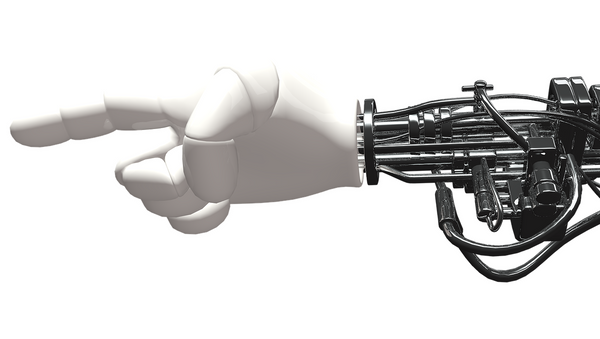Dani Clode, a designer and researcher at University College London’s Plasticity Lab, has developed a 3D-printed prosthetic that is controlled with pressure exerted with the big toes.
The robotic finger, which the scientists call the Third Thumb, was designed to extend the natural repertoire of hand movements. A group of people wore the Third Thumb during an observed augmentation test and were studied for changes in motor control and embodiment of the prosthetic.
Our first Third Thumb paper is now available as pre print! Neurocognitive consequences of hand augmentation. #thirdthumb @PlasticityUCL https://t.co/DxcuN6LwBx pic.twitter.com/jVZ3ZfiDWY
— Dani Clode (@DaniClode) June 17, 2020
The scientists also examined how the sensorimotor and body representation of the Thumb changed following the training.
During the 5 days of using the robotic finger, the participants were tasked with picking up wine glasses and building Jenga towers. Another task included holding a plastic cup while extracting a marble with a spoon.
How would our bodies and brains cope with augmentation? Can we understand the landscape of a tumour to better develop therapies? The 'Third Thumb' @PlasticityUCL and 'Exploring cancer landscapes' @CRUKMI teams will be exhibiting at #SummerScience 2021! pic.twitter.com/p9iJwuNCh1
— The Royal Society (@royalsociety) July 15, 2020
The findings of the study showed that after training, those using the thumb would show fewer differences in brain activity patterns for individual fingers. In other words, the part of the brain – activated when people move their fingers – has a weakened representation of the hand after training with the thumb.
The scientists concluded that technologies designed to augment human motor abilities hold a promise for both disabled and healthy communities.
"Here, we demonstrate that successful integration of motor augmentation can be achieved, with potential for flexible use, reduced cognitive reliance and increased sense of embodiment. Importantly, though, such successful human-robot integration may have consequences on some aspect of body representation and motor control which need to be considered and explored further," the study said.


